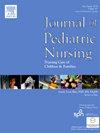Current trends and challenges in the United States of America based pediatric nursing workforce
IF 2.3
4区 医学
Q2 NURSING
Journal of Pediatric Nursing-Nursing Care of Children & Families
Pub Date : 2025-08-14
DOI:10.1016/j.pedn.2025.08.003
引用次数: 0
Abstract
Background and objective
Despite being an integral part of the pediatric workforce, little is known about the current trends and challenges facing pediatric nursing in the United States. The aim of this survey-based analysis was to identify 1) characteristics of the pediatric nursing workforce post-pandemic, 2) data on perceived challenges, 3) examine intent to leave, and 4) quantify compassion fatigue and burnout among pediatric nurses.
Methods
A survey-based descriptive design was used for data collection and analysis. Electronic recruitment was used to reach participants from June–August 2023. Descriptive statistics were calculated for all categorical variables to identify trends; subgroup analyses were conducted for main outcome variables including 1) perceived challenges, 2) intent to leave, 3) burnout, and 4) compassion fatigue.
Results
6590 United States based pediatric nurses participated, with 93 % identifying as female and over half (60.9 %) indicating employment in direct care roles. The top three concerns post-pandemic included staffing ratios, lower pay than other specialties, and student preparedness to practice. Close to a third of participants indicated that they either intended to leave the profession in the next 5 years (13.1 %), or were unsure if they would stay (17.8 %). Close to a third of respondents reported experiencing compassion fatigue and burnout either often or daily. Years of experience were associated with both burnout (p < .001) and compassion fatigue (p < .001), with both dropping after 16 years of experience.
Conclusions
Significant challenges face the pediatric nursing workforce, including high levels of burnout, compassion fatigue, intent to leave the profession, and concerns regarding adequate staffing.
当前的趋势和挑战在美国基于儿科护理人员
背景和目的尽管儿科护理是儿科劳动力不可分割的一部分,但人们对美国儿科护理当前的趋势和面临的挑战知之甚少。这项基于调查的分析的目的是确定1)大流行后儿科护理人员的特征,2)感知挑战的数据,3)检查离职意向,以及4)量化儿科护士的同情疲劳和倦怠。方法采用基于调查的描述性设计进行数据收集和分析。在2023年6月至8月期间,通过电子方式招募参与者。对所有分类变量进行描述性统计以确定趋势;对主要结果变量进行亚组分析,包括1)感知挑战,2)离职意图,3)倦怠和4)同情疲劳。结果6590名美国儿科护士参与了调查,其中93%为女性,超过一半(60.9%)的护士直接从事护理工作。大流行后最令人担忧的三大问题包括人员配备比例、低于其他专业的薪酬以及学生的实习准备。近三分之一的参与者表示,他们打算在未来五年内离开这个行业(13.1%),或者不确定是否会留下来(17.8%)。近三分之一的受访者表示,他们经常或每天都会感到同情疲劳和倦怠。多年的工作经验与职业倦怠(p <;.001)和同情疲劳(p <;.001),在16年的经验之后,两者都有所下降。儿科护理人员面临着重大挑战,包括高度倦怠、同情疲劳、离职意图以及对人员配备的担忧。
本文章由计算机程序翻译,如有差异,请以英文原文为准。
求助全文
约1分钟内获得全文
求助全文
来源期刊

Journal of Pediatric Nursing-Nursing Care of Children & Families
NURSING-PEDIATRICS
CiteScore
3.70
自引率
8.30%
发文量
291
审稿时长
65 days
期刊介绍:
Official Journal of the Society of Pediatric Nurses and the Pediatric Endocrinology Nursing Society (PENS)
The Journal of Pediatric Nursing: Nursing Care of Children and Families (JPN) is interested in publishing evidence-based practice, quality improvement, theory, and research papers on a variety of topics from US and international authors. JPN is the official journal of the Society of Pediatric Nurses and the Pediatric Endocrinology Nursing Society. Cecily L. Betz, PhD, RN, FAAN is the Founder and Editor in Chief.
Journal content covers the life span from birth to adolescence. Submissions should be pertinent to the nursing care needs of healthy and ill infants, children, and adolescents, addressing their biopsychosocial needs. JPN also features the following regular columns for which authors may submit brief papers: Hot Topics and Technology.
 求助内容:
求助内容: 应助结果提醒方式:
应助结果提醒方式:


